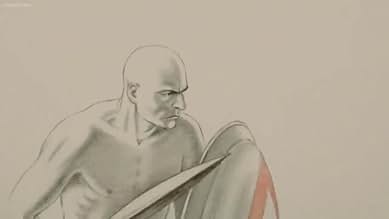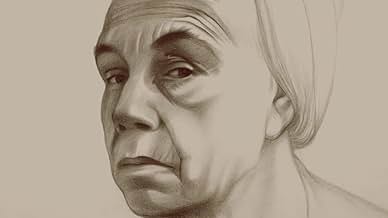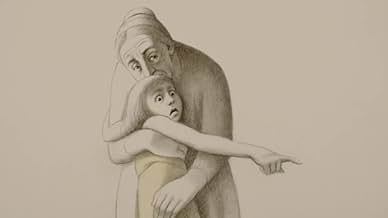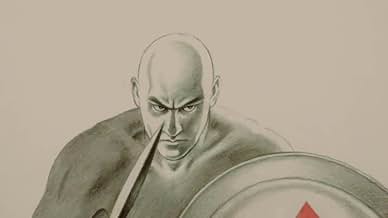VALUTAZIONE IMDb
6,5/10
1322
LA TUA VALUTAZIONE
Aggiungi una trama nella tua linguaTaking place 2,400 years in the past, Prologue depicts a brutal battle between two teams of Spartan and Athenian warriors.Taking place 2,400 years in the past, Prologue depicts a brutal battle between two teams of Spartan and Athenian warriors.Taking place 2,400 years in the past, Prologue depicts a brutal battle between two teams of Spartan and Athenian warriors.
- Regia
- Sceneggiatura
- Candidato a 1 Oscar
- 2 candidature totali
Recensioni in evidenza
Richard Williams' Prologue is a decidedly emptier short film in terms of plot, as its eight minutes showcase very elaborate and detailed sketches of warfare that are uncommonly violent and brutal, especially by the standards of animation. The battle takes place between Spartan and Athenian warriors, who find new and riveting ways to pierce the exposed fleshes of their enemies all while trying to win the war despite losing everything.
You can tell how little the short is about given my dramatic plot reiteration. As a whole, while there isn't much going on with Prologue, it's a strangely immersive short film. Its largely blank canvas, only decorated with simple pencil strokes of gray, black, and red that realize the ugliness of battle, strangely helps one get sucked into the world before being spit back out when the credits roll. On top of that, the violence here is immaculately conceptualized and the overall effect is strangely satisfying, almost servicing one's questionably human, carnal desires to see violence by way of such an innocent medium. If nothing else, use it as a cautionary tale for the horror of war.
You can tell how little the short is about given my dramatic plot reiteration. As a whole, while there isn't much going on with Prologue, it's a strangely immersive short film. Its largely blank canvas, only decorated with simple pencil strokes of gray, black, and red that realize the ugliness of battle, strangely helps one get sucked into the world before being spit back out when the credits roll. On top of that, the violence here is immaculately conceptualized and the overall effect is strangely satisfying, almost servicing one's questionably human, carnal desires to see violence by way of such an innocent medium. If nothing else, use it as a cautionary tale for the horror of war.
First of all, anyone who watches this can easily see why parents were advised to remove their children from the theater before it was presented.
The animation is -- STUNNINGLY Beautiful! I can see why another reviewer mistook the story as an tiny war, but I felt it was depicting Athens/Sparta.
The story is pointlessly grim and violent. As an aside, I doubt any man would find it comfortable to fight without at least underwear, if not shorts on. The dangling genitalia was unnecessary to the story, I cannot see one reason it was done.
What is it supposed to be? Is it supposed to speak to the violence and loss of war? Is that something our world doesn't understand, hence a need to waste the (considerable) effort of the artist on? No.
The entire time I was watching it I was frustrated by the wasted talent. He should find a new writer give him a story worthy of his work.
The animation is -- STUNNINGLY Beautiful! I can see why another reviewer mistook the story as an tiny war, but I felt it was depicting Athens/Sparta.
The story is pointlessly grim and violent. As an aside, I doubt any man would find it comfortable to fight without at least underwear, if not shorts on. The dangling genitalia was unnecessary to the story, I cannot see one reason it was done.
What is it supposed to be? Is it supposed to speak to the violence and loss of war? Is that something our world doesn't understand, hence a need to waste the (considerable) effort of the artist on? No.
The entire time I was watching it I was frustrated by the wasted talent. He should find a new writer give him a story worthy of his work.
War is hell and it always has been. I think that sometimes when animation is used, it is thought to be cartoon-like in the kindest sense. So when the realities of face to face battle are portrayed we seem to believe that we've somehow been betrayed by the filmmaker. There are no winners here, only the slaughter of our opponents and the end is meaningless. The face of he child and the old woman, wonderfully portrayed, are what should be etched in our memories. There is nothing clean about war and this shows it in spades.
This laughably inaccurate short was to be the introduction to a cartoon adaption of Lysistrata. The press material says: "Man against man and sword against spear, the soldiers are determined to sacrifice themselves for a greater purpose"
"man against man"? Classical age conflict between Greek city states was NOT melee pairing it was phalanx warfare. That is almost ritualized and surprising low violence, with an estimated 5% casualty rate per battle. Violence was almost entirely confined to combatants and phalanx fighting was essentially set piece pushing matches. There was virtually no "man against man" fighting at all.
That the cartoons was utterly inaccurate in detail as well is also important since the the details go to bigger issues. The greaves ALL hoplites wore and the type of shield (the word hoplite means shield warrior), and the standard length spear ALL had were for fighting in FORMATION. And the formation (the phalanx) reflected the citizen warrior fighting in a unified group -- as part of their responsibility to their city state and their fellow citizen warriors. Breaking off for melee pairings as in "Prologue" as it itself an act against one's fellow citizens since it compromised the phalanx.
Each citizen had to privately own the infantry arms and amour. This was an important part of egalitarian underpinnings of most city states.
The reason the Eight to Fifth century BC city states did not subjugate huge amounts of foreigners is because their fighting method, citizen, non professional solders who had their own equipment. Assyrians, Persians, later Macedonian Greeks, and empire period Romans all had armies were paid or impressed soldiers, who did not own their weapons and who were permanent professional soldiers. those other forces did NOT have to get back to the fields or regular jobs" like Lysistrata era Greeks had to.
The cartoonist completely misses the point: If warfare today was like classical age Greek warfare, with its lack of full time professional soldiers, with its lack of central armories, but instead owned arms, with its "winning" by having 5% or so of combatants die on the field, and victory declared, instead of "total war" with its lack of razing cities in most cases -- we would be a LOT better off.
The author/cartoonist, and anyone interested, ought to read the preeminent scholar on Lysistrata era Hoplite warfare: Victor Davis Hanson's "Hoplites: The Classical Greek Battle Experience" so they do not get confused.
"man against man"? Classical age conflict between Greek city states was NOT melee pairing it was phalanx warfare. That is almost ritualized and surprising low violence, with an estimated 5% casualty rate per battle. Violence was almost entirely confined to combatants and phalanx fighting was essentially set piece pushing matches. There was virtually no "man against man" fighting at all.
That the cartoons was utterly inaccurate in detail as well is also important since the the details go to bigger issues. The greaves ALL hoplites wore and the type of shield (the word hoplite means shield warrior), and the standard length spear ALL had were for fighting in FORMATION. And the formation (the phalanx) reflected the citizen warrior fighting in a unified group -- as part of their responsibility to their city state and their fellow citizen warriors. Breaking off for melee pairings as in "Prologue" as it itself an act against one's fellow citizens since it compromised the phalanx.
Each citizen had to privately own the infantry arms and amour. This was an important part of egalitarian underpinnings of most city states.
The reason the Eight to Fifth century BC city states did not subjugate huge amounts of foreigners is because their fighting method, citizen, non professional solders who had their own equipment. Assyrians, Persians, later Macedonian Greeks, and empire period Romans all had armies were paid or impressed soldiers, who did not own their weapons and who were permanent professional soldiers. those other forces did NOT have to get back to the fields or regular jobs" like Lysistrata era Greeks had to.
The cartoonist completely misses the point: If warfare today was like classical age Greek warfare, with its lack of full time professional soldiers, with its lack of central armories, but instead owned arms, with its "winning" by having 5% or so of combatants die on the field, and victory declared, instead of "total war" with its lack of razing cities in most cases -- we would be a LOT better off.
The author/cartoonist, and anyone interested, ought to read the preeminent scholar on Lysistrata era Hoplite warfare: Victor Davis Hanson's "Hoplites: The Classical Greek Battle Experience" so they do not get confused.
Impressive non verbal cartoon of high seriousness. No Pink Panthers here. It's also a long trip from Williams' The LITTLE ISLAND or the disaster of The PRINCESS & THE COBBLER.
Spending years doing one frame one drawing on paper, before state of the art modification, to achieve a striking, exceptionally fluid style, this one is a break from what we've seen from Williams.
The labor of love short film uses the Spartan-Athenian conflict for it's imagery.
We see aggression and its consequences in a sometimes startling manifestation.
Spending years doing one frame one drawing on paper, before state of the art modification, to achieve a striking, exceptionally fluid style, this one is a break from what we've seen from Williams.
The labor of love short film uses the Spartan-Athenian conflict for it's imagery.
We see aggression and its consequences in a sometimes startling manifestation.
Lo sapevi?
- QuizThis is the first mature cartoon by Richard Williams to depict graphic violence, blood and full frontal nudity.
- ConnessioniFeatured in The Oscar Nominated Short Films 2016: Animation (2016)
I più visti
Accedi per valutare e creare un elenco di titoli salvati per ottenere consigli personalizzati
Dettagli
- Tempo di esecuzione6 minuti
- Colore
- Proporzioni
- 1.78 : 1
Contribuisci a questa pagina
Suggerisci una modifica o aggiungi i contenuti mancanti



















